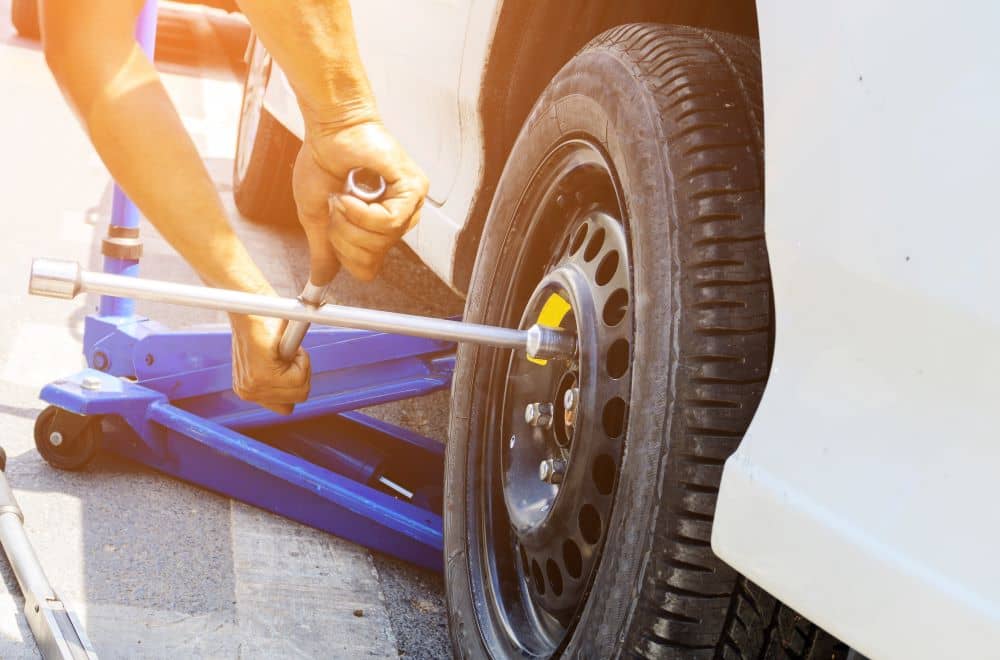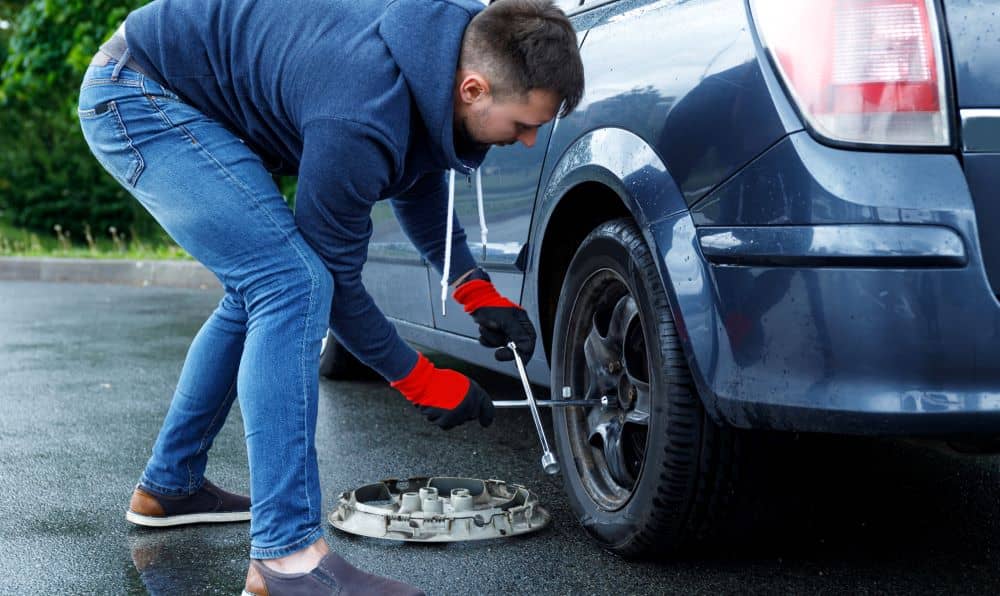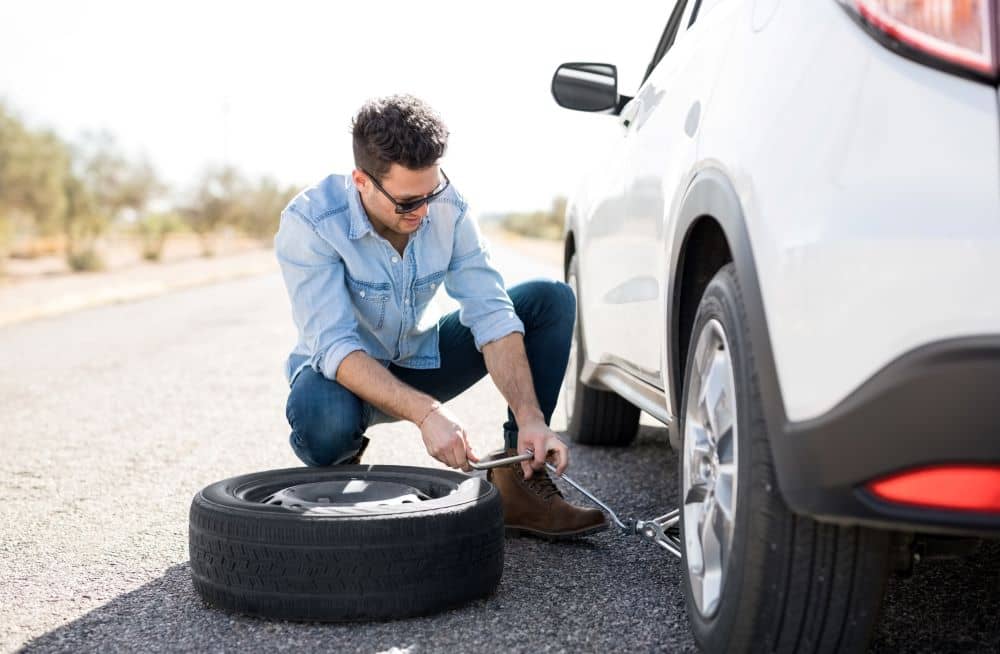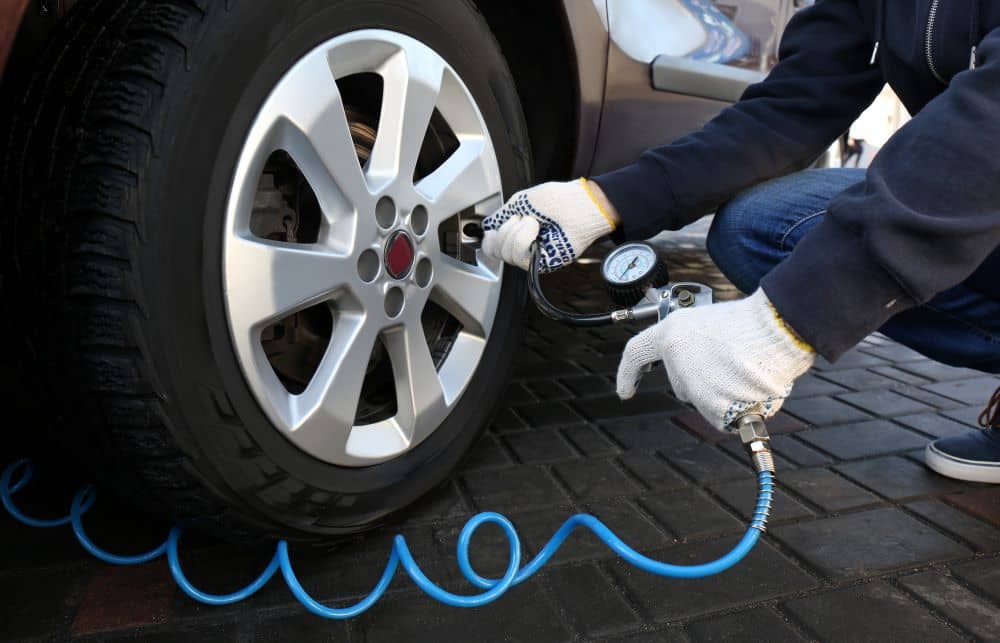Replacing a tyre is not difficult. Nor does it demand the upper body strength of a weight lifter to get the job done. It is an acquired skill, which anyone can learn. Here is a guide on how to change the tyre of your car without much hassle.
Find out what’s involved in maintaining your tyres in this guide on how to change to a tyre.
- How to Change a Car Tyre?
- Tools Required To Change A Tyre
- Steps to Change Car Tyre
- Emergency Spares
- Maintaining Your Tyres
How to Change a Car Tyre?
Specific tools are delivered along with the car, while others, which catalyze the process, must be bought in advance. Below, we have listed a few tools, which will make the job easy followed by steps on changing a car tyre.
Tools Required To Change A Tyre:
- Vehicle’s Manual: The manual comes with important information crucial when replacing the tyre. Small but important information regarding the type of wrench, which will fit the bolts and the vehicle’s nuts, can be safely found within the manual.
- Lug Wrench: Lug wrench is used to tighten and loosen the lug nuts on the wheel.
- Spare Tyre: To swap with the destroyed tyre.
- Jack: A jack is used for lifting the car several inches so that the tyre can easily be swapped. Currently, there are many kinds of jacks in the market. However, all automakers provide a jack with the vehicle.
Steps to Change Car Tyre:
1. Search for a Safe Place
It is important to get off the road safely upon realizing you have a flat tyre. You are advised not to turn sharply as it is unsafe for you and other cars using the road. Next, search for a safe spot to park your vehicle, alight, and swap the flat tyre with the spare. Ensure that there is ample space between the car and the road.
2. Turn On the Parking Lights
By turning on the hazard light, you inform other road users of your presence. They will get a glimpse of the flickering lights from afar, and you can replace the tyre safely.
3. Engage the Hand-Break to Park
Parking the automobile by engaging the hand-break ensures that it remains locked in position as you use force to remove and replace the tyre.
4. Secure the Wedges
Mount the wedges behind the good wheels as an additional safety precaution. The wedges are necessary, especially if the road is sloppy.
5. Get Rid of Wheel Covers
Numerous vehicle tyres are enclosed with wheel covers. The covers have to be removed before proceeding to replace the destroyed tyre. The vehicle’s manual should come in handy at this juncture. You are advised to note that different vehicle models have different settings for wheel covers.
6. Loosen the Lug Nuts Halfway
The lug nuts have to be partially loosened before you hoist a vehicle with a jack because if you elevate the car first, the wheel will keep on spinning. Employ the lug wrench to loosen the lug nuts. Make sure you utilize the right size side of the wrench.
7. Secure the Position of the Jack Using Wooden Pieces of Wood
Identify a good jacking spot beneath your vehicle. It is where the jack is meant to connect with the car. Mount the wooden pieces of wood beneath the jacking spot and keep the jack on them. Then, attach the jack to the jacking spot and lift the vehicle until you witness a small gap between the earth and the tyre.
8. Eliminate the Lug Nuts Entirely
Loosen the lug nuts with the aid of a wrench and get rid of all the lug nuts.
9. Swap the Flat Tyre with a Spare Wheel
Please remove the flat tyre from the frame and swap it with a spare one.
10. Tighten Lug Nuts and Replace Wheel Cover
Tightening the lug nuts and replacing the wheel cover is the final step for changing a tyre. Partially crew the lug nuts and lower the automobile. Get rid of the jack and the wooden pieces of wood once the tyre touches the earth firmly. Now screw the lug nuts firmly and swap the wheel cover.
Place all the tools back in the tool kit, and you can resume driving after confirming the tyre pressure. If you lack a proper tool, go to the closest auto shop and get the tyre checked. The flat tyre should be repaired promptly.
Emergency Spares
If your spare wheel is a “space saver tyre” (a compact wheel with a bright yellow wheel), it is meant to take you home or to an auto shop. The limited space saver tyre has a speed restriction of virtually 80 kilometres per hour, and it is synonymous with lowered steering and stopping ability. It is wise to have a new tire fixed promptly. If you have used the current spare wheel, it is good to buy a new one to keep within your storage section. Always have your wheels aligned and tested by a guru.
Maintaining Your Tyres
Below, we have listed three tips to help elongate the life of your tyres and mitigate the chances of acquiring a flat:
- Rotate the tyres frequently to enable even out the wear and tear.
- Frequently check the pressure of your wheels and inflate when necessary. Tyre pressure gauges are generally available at most service stations.
- Keep a check on your wheels’ tread and acquire new ones when worn out. It would help if you always stood a coin within the thread with the coin’s outer band invisible.
Conclusion
If you are not confident enough to swap the flat tyre with a good one, consider asking for assistance from a friend or a roadside assistance operator. If not, you can call and drive directly to a local auto shop if you can pull it without endangering your life and that of other road users. A few insurance providers include roadside assistance in their policy or provide it at an additional cost. Contact your provider for more information regarding your cover.





